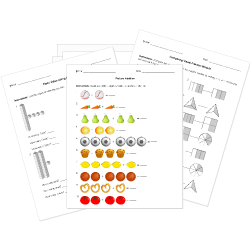Common Core Standard HSA-REI.D.11 Questions
Explain why the x-coordinates of the points where the graphs of the equations y = f(x) and y = g(x) intersect are the solutions of the equation f(x) = g(x); find the solutions approximately, e.g., using technology to graph the functions, make tables of values, or find successive approximations. Include cases where f(x) and/or g(x) are linear, polynomial, rational, absolute value, exponential, and logarithmic functions.★
You can create printable tests and worksheets from these questions on Common Core standard HSA-REI.D.11! Select one or more questions using the checkboxes above each question. Then click the add selected questions to a test button before moving to another page.







